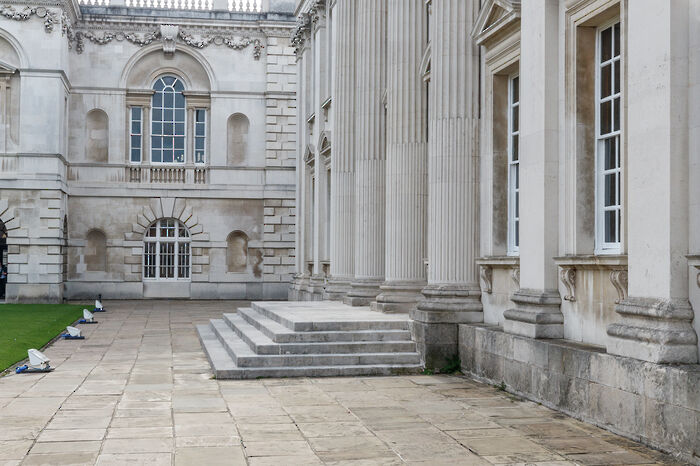Class list opt-out rate nears 50%
Cambridge’s women’s colleges had the highest opt-out rates, with each seeing more than 60% of eligible students opting out

47.3% of students opted out of having their name published on class lists this year, Varsity can reveal.
This is a 10.8 percentage point increase from last year, when 36.5% of students opted out of having their marks displayed on notice boards outside Senate House and online.
This year, 6,047 undergraduates and 211 postgraduates out of 13,231 eligible students chose to opt out, according to data obtained by Varsity through a Freedom of Information Act request. The opt-out rate was considerably higher for undergraduates, at 49.8%, compared to postgraduates, at 19.2%.
The total proportion of students who have opted out has now risen above the rate at which Oxford decided to abolish Class Lists in 2009, when around 40% of students chose not to have their results publicised.
Women opted out at almost double the rate of men, with 61.5% of women opting out compared to 34.6% of men, a percentage point difference of 26.9. The gender gap in opt-out rates has thus widened since last year, where the percentage point difference was 23.6.
Unsurprisingly, then, the three women’s colleges had the top three opt-out rates for this year’s exams: Newnham had the highest opt-out rate of any college at 70.5%, then Murray Edwards at 66.1% and Lucy Cavendish at 61.2%.
The opt-out rate for students whose gender is recorded as ‘other’ in the University’s administrative systems was higher, at 72.7%. However, only 11 students eligible to opt out are officially listed as such in the University’s systems, and this figure therefore may not be representative of the wider body of students who do not identify as either male or female and are eligible to opt out of class lists.
Speaking to Varsity, CUSU Women’s Officer Kate Litman highlighted the lack of accurate data representing the experiences of non-binary people with regards to exam results: “when non-binary people don’t have their gender correctly recorded by the University, we don’t have data which accurately reflects their experiences,” she explained.
She pointed to the necessity of “the demands of the 'Why Gender Neutral?’ Campaign for the University to update its administrative systems to include non-binary genders."
Discussing the findings, Litman noted that the University “know[s] from research conducted on the Gender Attainment Gap in 2015 that women are more likely than men to feel uncomfortable in learning environments in Cambridge.”
And citing WomCam’s 2015 Mind the Gap report, she recognised that while “far more women than men felt their gender negatively impacted their learning experience — 1 in 5 compared to 1 in 25 — [...] this was even higher for students who identified as neither male nor female, with 1 in 2 of these students feeling that their gender negatively impacted their learning experience."
There were generally higher opt-out rates for arts and humanities subjects compared to the sciences. 82.6% of Archaeology and Land Economy students opted out, followed closely by 78.7% of History and Modern Languages students and 75.1% of HSPS students.
Medical Sciences and Veterinary Sciences had the highest student opt-out rates among science students, at 71.0%. The second highest spot was taken by Natural Sciences students, with 48.8% of students opting out.
Churchill College, which is committed to offering 70% of its places to STEM students each year, had the lowest opt-out rate of all the non-mature colleges, at 33.5%.
Second years – who, as freshers, comprised the largest proportion of opt-outs last year – were the most likely to opt out from this year’s exams, at a rate of 55.3%. Following this, third years were the second most likely to opt out, with 50.8% choosing this option. Unlike the previous year where students needed to manually opt-out through CamSIS, students who had opted out from the Class Lists last year were automatically left off the Class Lists this year, unless they manually opted back in.
Freshers still opted out at a higher rate than the previous year’s first-year cohort, however, at 42.3%.
In April 2016, Varsity revealed that a review of class lists by the General Board of Faculties had recommended that class lists be abolished. However, Regent House members voted in December of that year to save Class Lists, which followed a referendum launched by campaign group ‘Save the Class Lists,’ where 55.2% of students voted to keep Class Lists, but with an “easier opt-out process." This easy opt-out process was confirmed in May 2018.
“The benefit of having an opt-out system is that those who want to opt out do, and those who don’t want to opt out can still see their results published,” a spokesperson for the University told Varsity.
“We are glad to see that so many students are exercising their right to make this choice through our new opt-out system.”
Speaking in support of the abolition of Class Lists, Litman added that the Women’s Campaign “believe[s] that education should not be a competition, and that making it one is actively harmful."
Student Minds Cambridge told Varsity that “making the process of opting-out from Class Lists easier and more transparent has played an important role in promoting a less competitive environment at Cambridge."
“Some students can find an overly competitive [environment] detrimental to their mental wellbeing, and we would encourage these students to reach out to some of the student wellbeing provisions offered at the University,” they added, pointing to resources including your tutor, the Students’ Union’s Advice Service and your GP, with some other available resources detailed on https://www.findsupportcam.com.
“If you reach out to us, we can try to help direct you to the appropriate resources.”
 Interviews / You don’t need to peak at Cambridge, says Robin Harding31 December 2025
Interviews / You don’t need to peak at Cambridge, says Robin Harding31 December 2025 News / Unions protest handling of redundancies at Epidemiology Unit30 December 2025
News / Unions protest handling of redundancies at Epidemiology Unit30 December 2025 Comment / What happened to men at Cambridge?31 December 2025
Comment / What happened to men at Cambridge?31 December 2025 Features / ‘Treated like we’re incompetent’: ents officers on college micromanagement30 December 2025
Features / ‘Treated like we’re incompetent’: ents officers on college micromanagement30 December 2025 Theatre / We should be filming ADC productions31 December 2025
Theatre / We should be filming ADC productions31 December 2025








